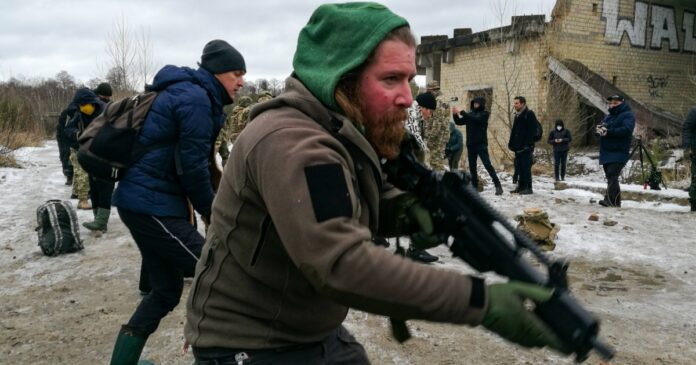For the last couple of months “Russian invasion of Ukraine” is making headlines in international media, with all sorts of reports regarding the Kremlin’s plan to invade Ukraine dominating the media space. Pentagon and US military officials are giving briefings on when and how Russia will invade Ukraine. Meanwhile, the USA is also pushing allies to support Ukraine in order to deal with the invasion. If one buys the media sensitization and agenda-driven news reports it seems full-scale war is just around the corner, with many even giving an exact date of invasion quoting different Intelligence sources. Yes, the Russian build-up along the Ukrainian border is for real but understanding the goals behind any major military adventure is very important.
Many are referring to World War II and Cold War-era events, where the Russian Empire/USSR military postures were based on finding the “Strategic depth” in the Ukraine. But now this framework is flawed as both the regional and global dynamics have dramatically evolved especially in the last two decades,and so have the economic, strategic, and geopolitical realities.
Russian President Vladimir Putin’s adventures in Georgia, Libya, Syria, and Ukraine itself would help understand the current building crisis in the region. Starting from the very first military adventure of Russia in Georgia back in 2008, where Russian forces, after pushing Georgian forces out from South Ossetia and Abkhazia, entered into negotiations mediated by Europe. Despite the asymmetric dynamics and holding strategic Gori city, Russia opted for de-escalation because the Kremlin had achieved its primary goal with limited military operations and further escalation would have drawn it into a major conflict having serious consequences for the Russian economy.
A few years down the lane, in 2015 Russian forces landed in Syria having goals similar to those in Georgia. The Russian air force extensively provided Assad forces air cover during offensive operations to push rebels out of the major cities. The military response from Russia remained limited to air support, mercenaries, military advisors, and training roles while Iran set up its proxies to assist the Assad ground forces. Just like in Georgia, Russia did not rely on overwhelming hard power but focused on going by the book, respecting regional political realities. Russia developed a framework for operations in Syria not only with Iran but also with Turkey and Israel, which helped Russia to keep the conflict low on the escalation ladder. Russia achieved the primary objective of securing the Assad regime based in Damascus at a minimum cost without getting into a major high-intensity conflict or full-scale war despite being engaged with forces backed by Turkey, the USA, and NATO.
The deployment of the US air defense and missile systems in Eastern Europe is perceived as a major threat by the Kremlin and Russia will continue holding military exercises till it neutralizes this by introducing a New Normal.
After the success of this doctrine in Georgia and Syria, Russia entered the conflict in Libya with the same strategy. Russia once again avoided reliance on hard power and gave limited military support to Haftar forces that involved the supply of ammunition, weapons, and mercenaries that helped Haftar forces secure control of major parts of Libya.
During the 2014 Russian-Ukraine crisis, the strategy was exactly what we witnessed in Syria, Libya, and Georgia. Instead of invading Ukraine and entering into a full-scale war, Russia relied on “Limited military support”; financed and armed the separatists, and sent mercenaries, while officially denying any role just to avoid any direct military confrontation with NATO. Russia secured Donetsk and Luhansk by holding a referendum, calling it “Will of the people”.
The pattern and strategy employed by Russia in Ukraine and elsewhere is obvious. Russia wants to strengthen its southern flank at the minimum cost by creating “buffer zones”, and meanwhile avoiding entering into a major high-intensity conflict.
Considering the pattern, strategy, and cost attached to it, a full-scale invasion of Ukraine by Russia is very unlikely to unfold. So why is Russia building up along the Ukrainian border? If Russia is looking for strategic depth against NATO, then it already has forces in the Donbas region, Crimea and Belarus. Moreover, even in that case, Russia can push the separatists in the Donbas region to expand the operations instead of putting its forces at risk. This means the objective of military buildup is not “immediate war” with a primary goal to conquer Ukraine, as predicted by Western media but is something else.
Moscow wants to dictate European security, putting a stop to NATO’s eastward expansion. The military buildup by Russia has already generated enough pressure to force European countries to review their policies regarding Russia’s future in the region. Ukraine’s NATO membership is already at a halt. The solution to this crisis does not lie in Kyiv or Moscow but in Brussels and Washington. If the mediation by Germany and France work out, all parties can design a framework especially regarding the security of Eastern European countries.
The deployment of the US air defense and missile systems in Eastern Europe is perceived as a major threat by the Kremlin and Russia will continue holding military exercises till it neutralizes this by introducing a New Normal.























